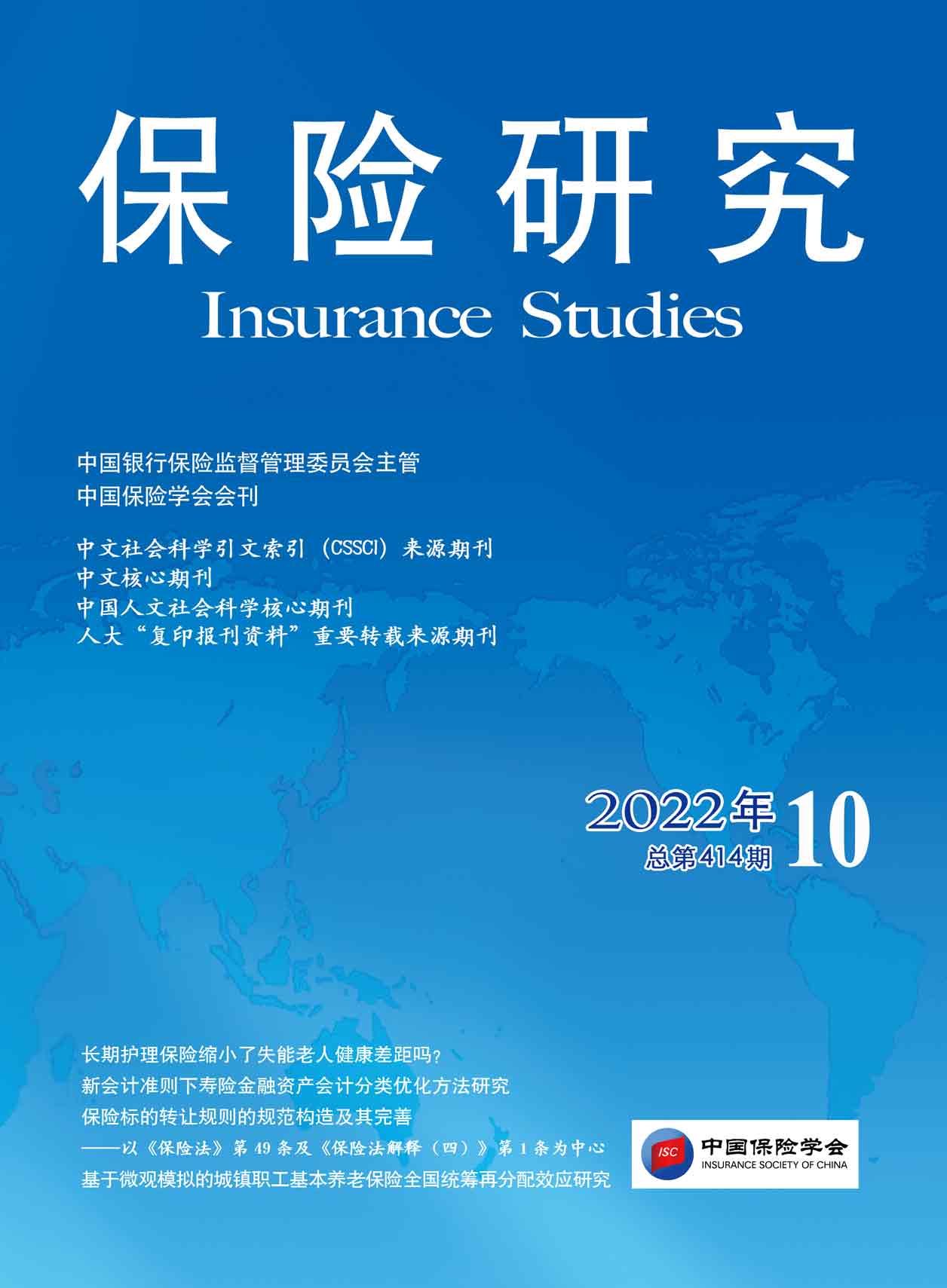
《保险研究》20221001-《多层次医疗保障体系评估——基于复合维度的发展指数测算》(朱铭来、仝洋、周佳卉、陈召林)
[中图分类号]F842.6[文献标识码]A[文章编号]1004-3306(2022)10-0003-16 DOI:10.13497/j.cnki.is.2022.10.001
资源价格:30积分
- 内容介绍
[摘 要]本文根据基本医疗保险、大病保险、医疗救助、商业健康保险实际覆盖的医疗费用,测算了不同地区对重特大疾病的整体保障程度和多层次医疗保障体系的实际构成情况;立足于保障性,分别构建了针对不同保障层次的评价指标体系,并在此基础上测算了省级层面的基本医疗保险发展指数、大病保险发展指数、医疗救助发展指数和商业健康保险发展指数;基于多层次医疗保障体系建设的复合维度,借助以上两步的测算结果,通过构建省级层面的多层次医疗保障发展指数,对不同地区多层次医疗保障体系的发展差异进行了定量评估,揭示了我国多层次医疗保障体系的综合保障程度和地域分布特征。测算结果显示,2020年多层次医疗保障体系的总保障程度为68.06%,其中,基本医保、大病保险、医疗救助、商业健康保险的保障程度分别为57.39%、1.50%、0.99%、8.18%,医疗费用的个人自付程度为31.94%。评估结果显示,2020年“多层次医疗保障发展指数”最高的5个地区分别为北京、上海、青海、西藏、宁夏,“多层次医疗保障发展指数”最低的5个地区分别为湖南、山东、湖北、陕西、河南。
[关键词]重特大疾病;多层次医疗保障体系;评价指标体系;保障程度;发展指数
[基金项目]本文为国家社会科学基金项目(18BGL199)和“多层次医疗保障:重特大疾病保障指数”课题的研究成果。
[作者简介]朱铭来,南开大学金融学院、周恩来政府管理学院教授,博士生导师,研究方向:卫生经济与医疗保障;仝洋(通讯作者),南开大学金融学院博士研究生;周佳卉,南开大学周恩来政府管理学院博士研究生;陈召林,南开大学金融学院博士研究生。感谢王本科、马智苏、申宇鹏、邓雅倩对本研究相关工作的支持和贡献。
Evaluation of the Multi-level Medical Security System— Based on the Development Index of Composite Dimensions
ZHU Ming-lai,TONG Yang,ZHOU Jia-hui,CHEN Zhao-lin
Abstract:First of all,according to the actual medical expenses covered by basic medical insurance,supplementary major medical expenses insurance,medical aid,and commercial health insurance,this paper calculated the security degree against serious and critical diseases and the actual composition of multi-level medical security systems in different regions.The calculation results show that the total coverage of the multi-level medical security system in 2020 is 68.06%,of which the coverage of basic medical insurance is 57.39%,and 1.50% for the supplementary major medical expenses insurance,0.99% for medical aid,and 8.18% for the commercial health insurance.The out-of-pocket medical expenses account for 31.94% of the total.Secondly,based on the nature of protection,this paper constructed the evaluation index systems for different protection levels,and calculated the development indexes of basic medical insurance,supplementary major medical expenses insurance,medical aid and commercial health insurance at the provincial level.Finally,based on the composite dimensions of the multi-level medical security system and the results of the above two steps,and by building a multi-level medical security development index at the provincial level,this paper carried out a quantitative evaluation on developmental differences of the multi-level medical security system in different regions of China,so as to reveal the comprehensive protection degree and regional distribution characteristics of the multi-level medical security system in China.The evaluation results show that in 2020,the five regions with the highest “multi-level medical security development index”,that is,the five regions with the best comprehensive protection effect of the multi-level medical security system are Beijing,Shanghai,Qinghai,Tibet,and Ningxia.The five regions with the lowest “multi-level medical security development index” and the weakest comprehensive protection effect of the multi-level medical security system,are Hunan,Shandong,Hubei,Shaanxi and Henan.
Key words:serious and critical diseases;multi-level medical security system;evaluation index system;degree of protection;development index
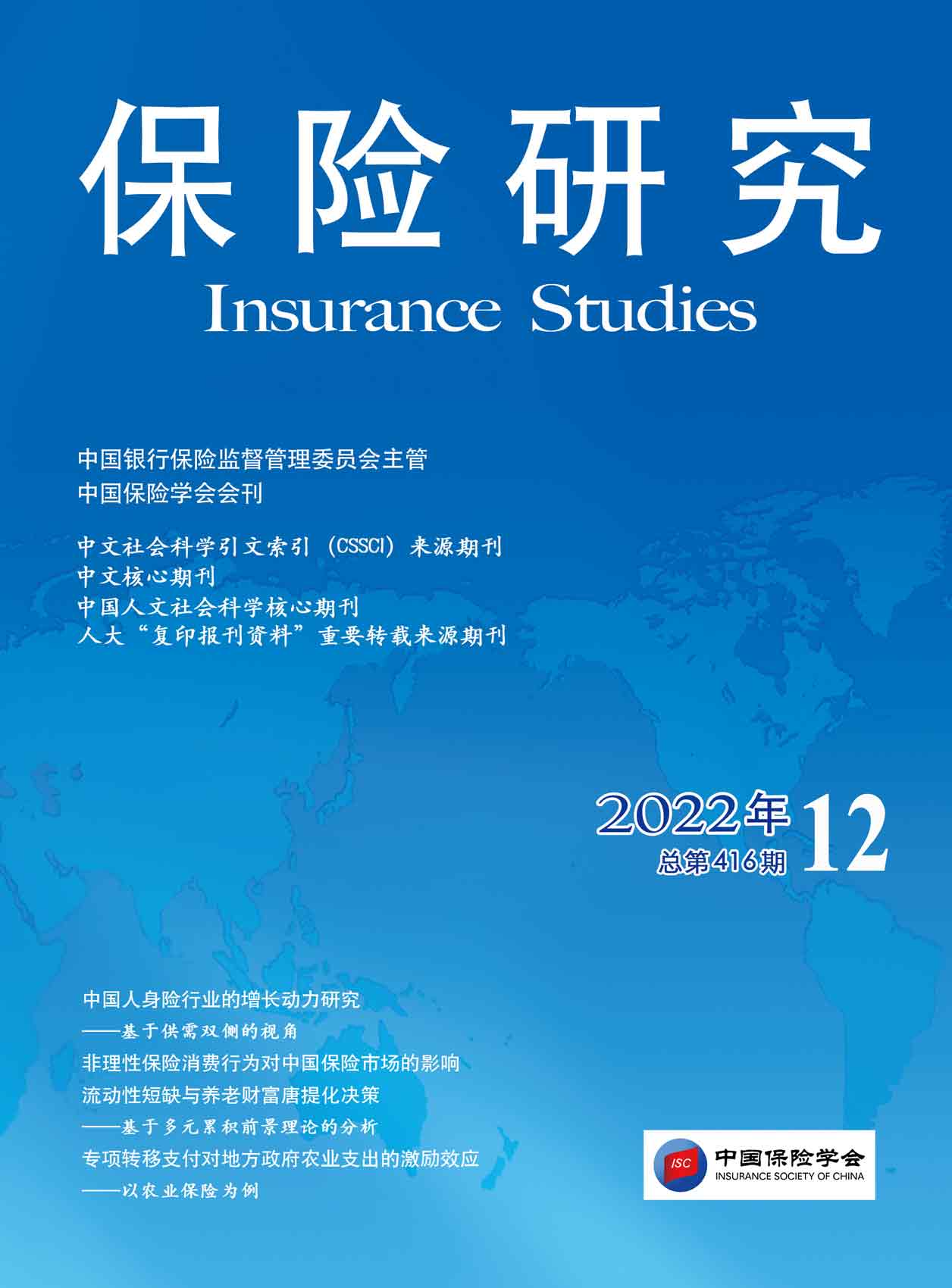
《保险研究》20221201-《中国人身险行业的增长动力研究——基于供需双侧的视角》(杨斐滟、何薇、陈滔)
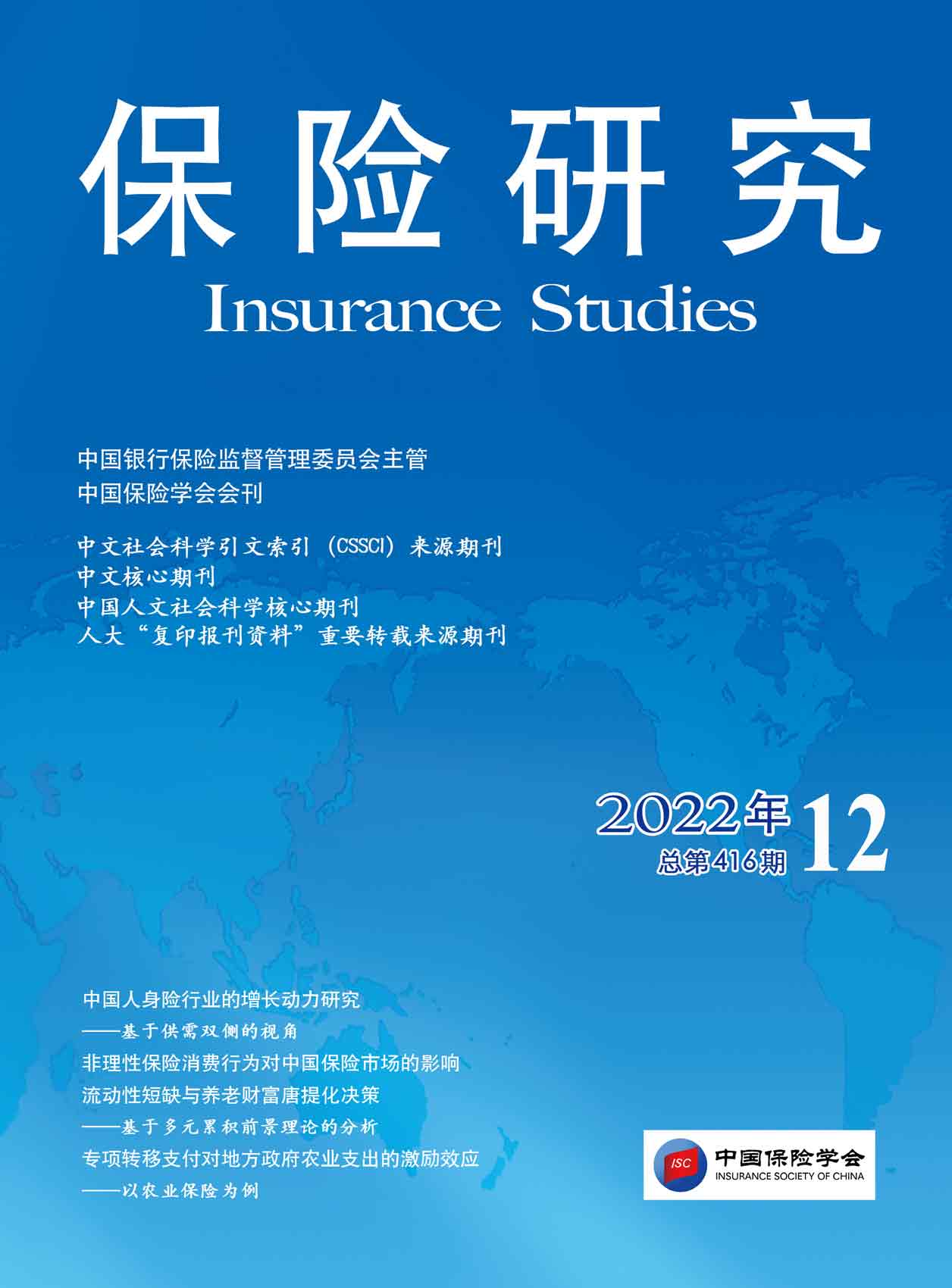
《保险研究》20221202-《非理性保险消费行为对中国保险市场的影响》(郭振华、朱少杰)
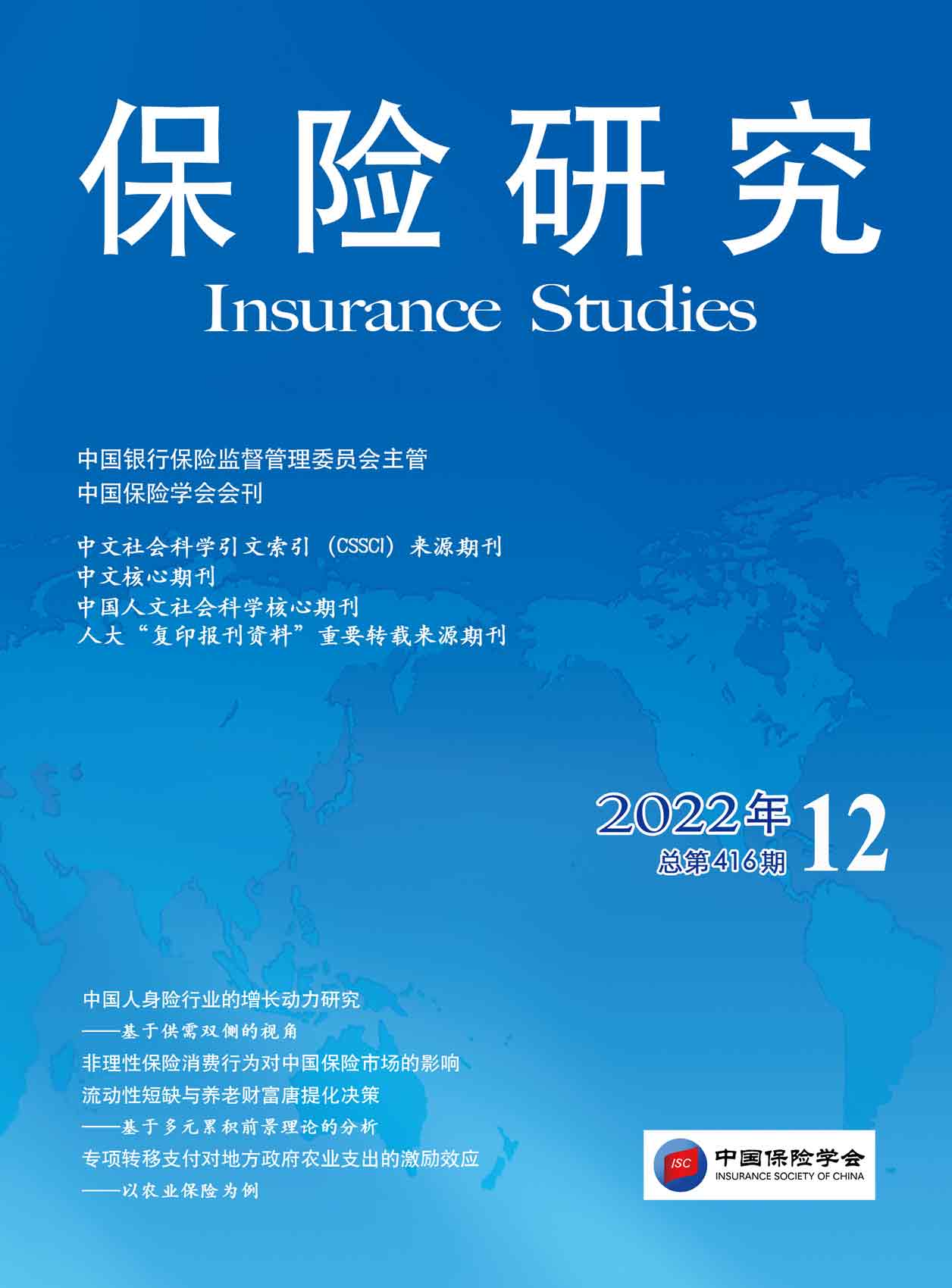
《保险研究》20221203-《流动性短缺与养老财富唐提化决策——基于多元累积前景理论的分析》(王力平、隋杰)
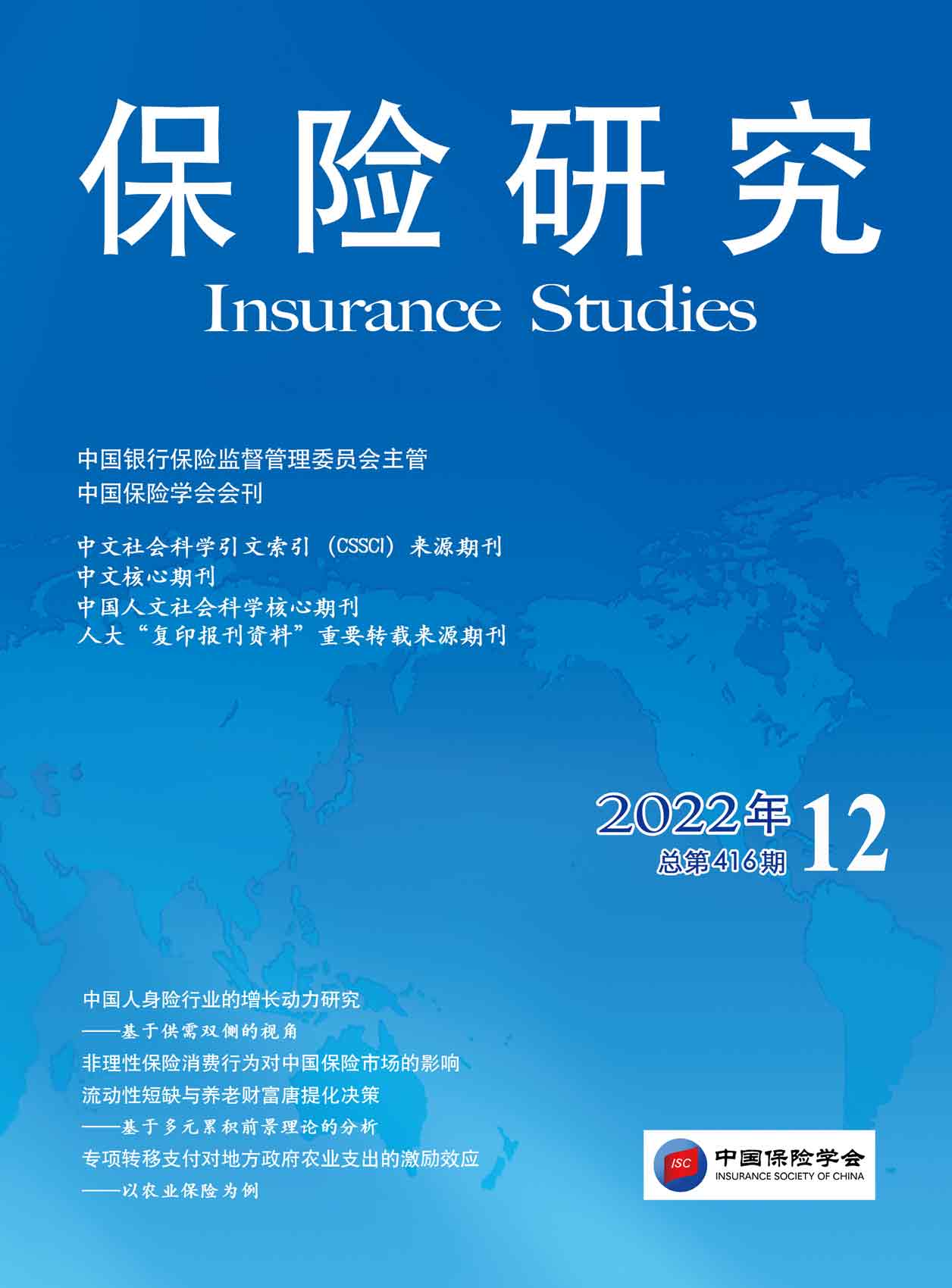
《保险研究》20221204-《专项转移支付对地方政府农业支出的激励效应——以农业保险为例》(何小伟、曹杨、刘怡鑫)
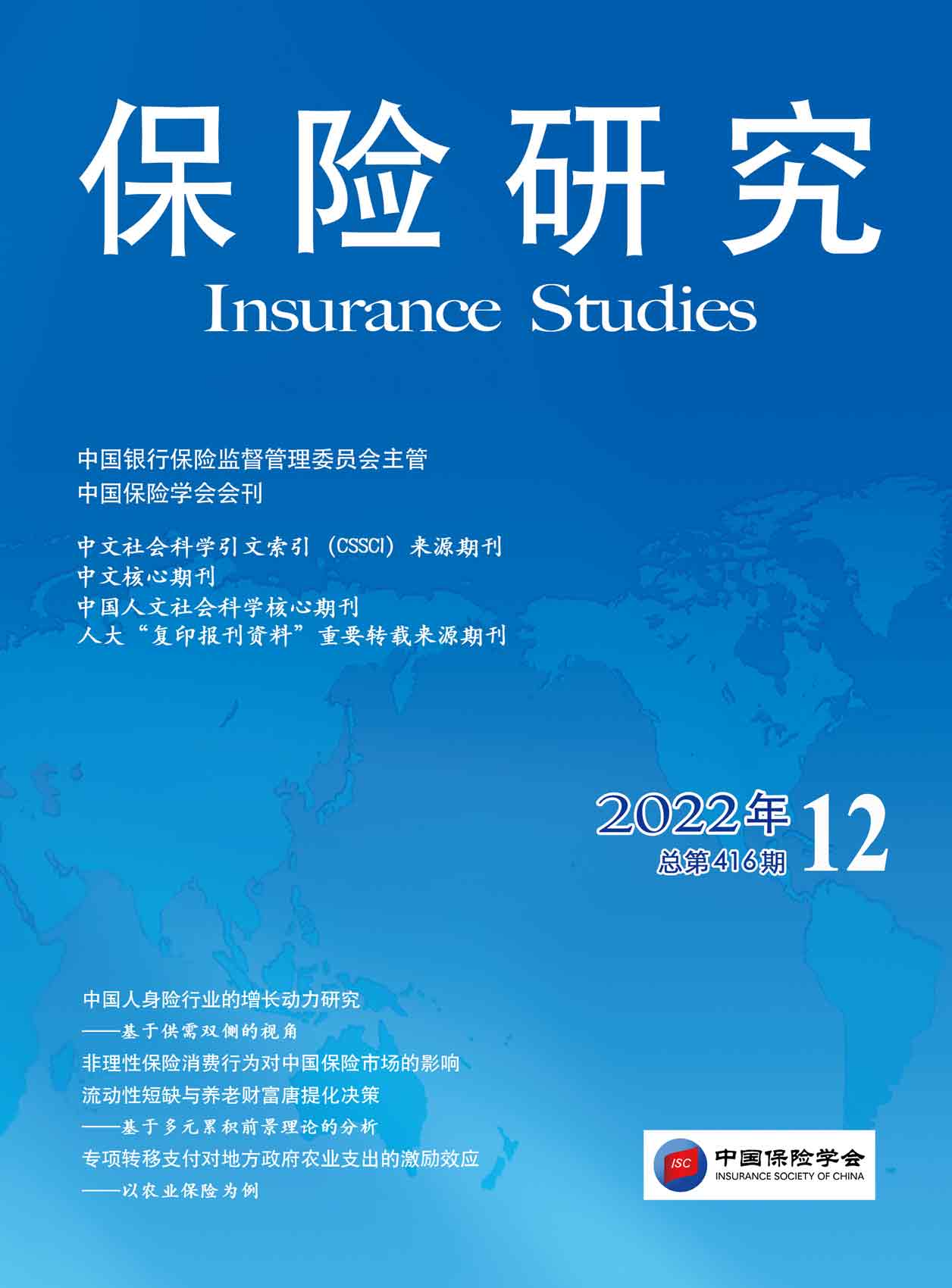
《保险研究》20221205-《生猪利润保险在生猪市场调控中的作用研究——以四川省为例》(李亚茹、张海浪)
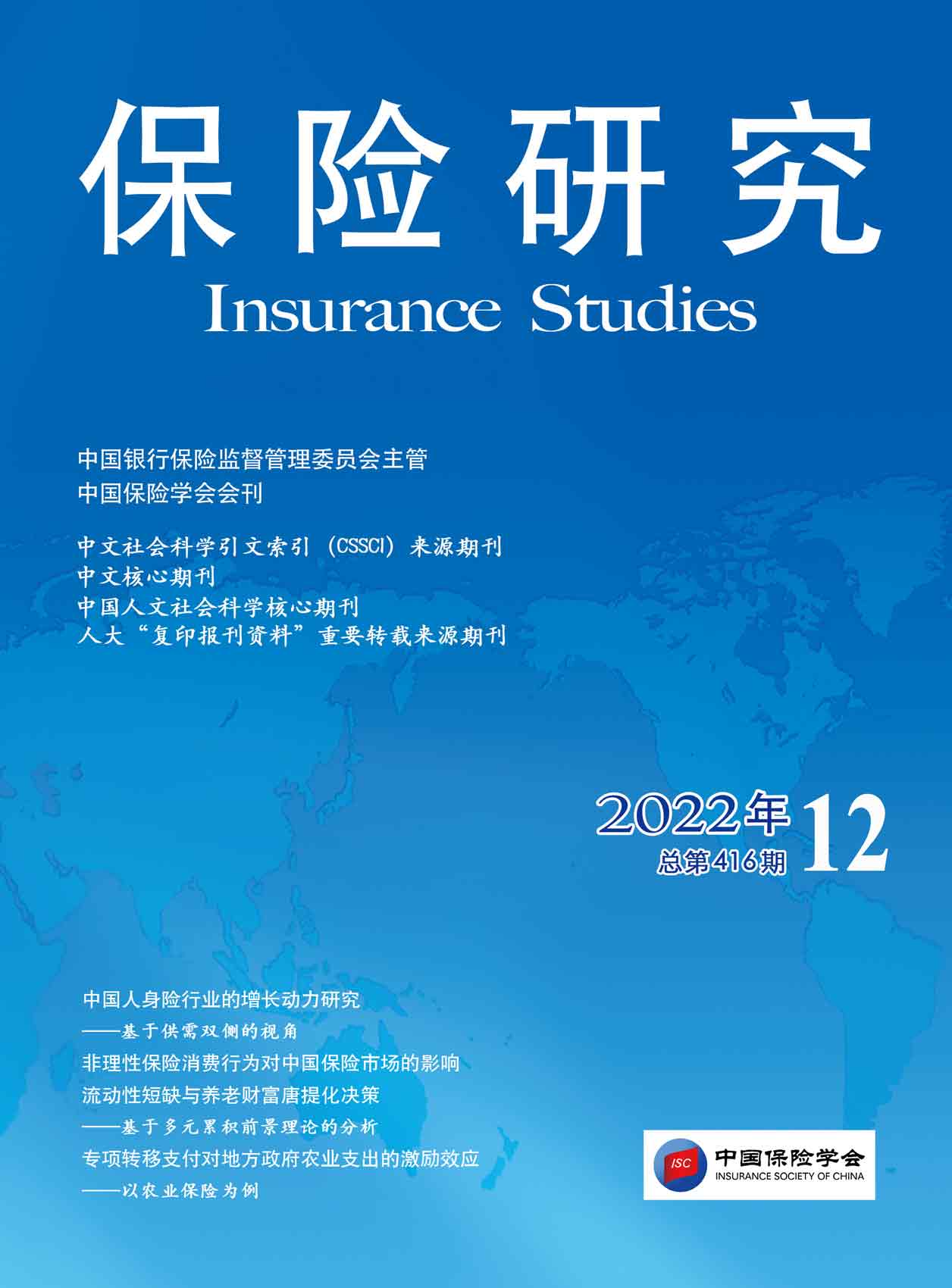
《保险研究》20221206-《主流机器学习方法识别车险欺诈效果的比较研究》(陈凯、李斌杰)
